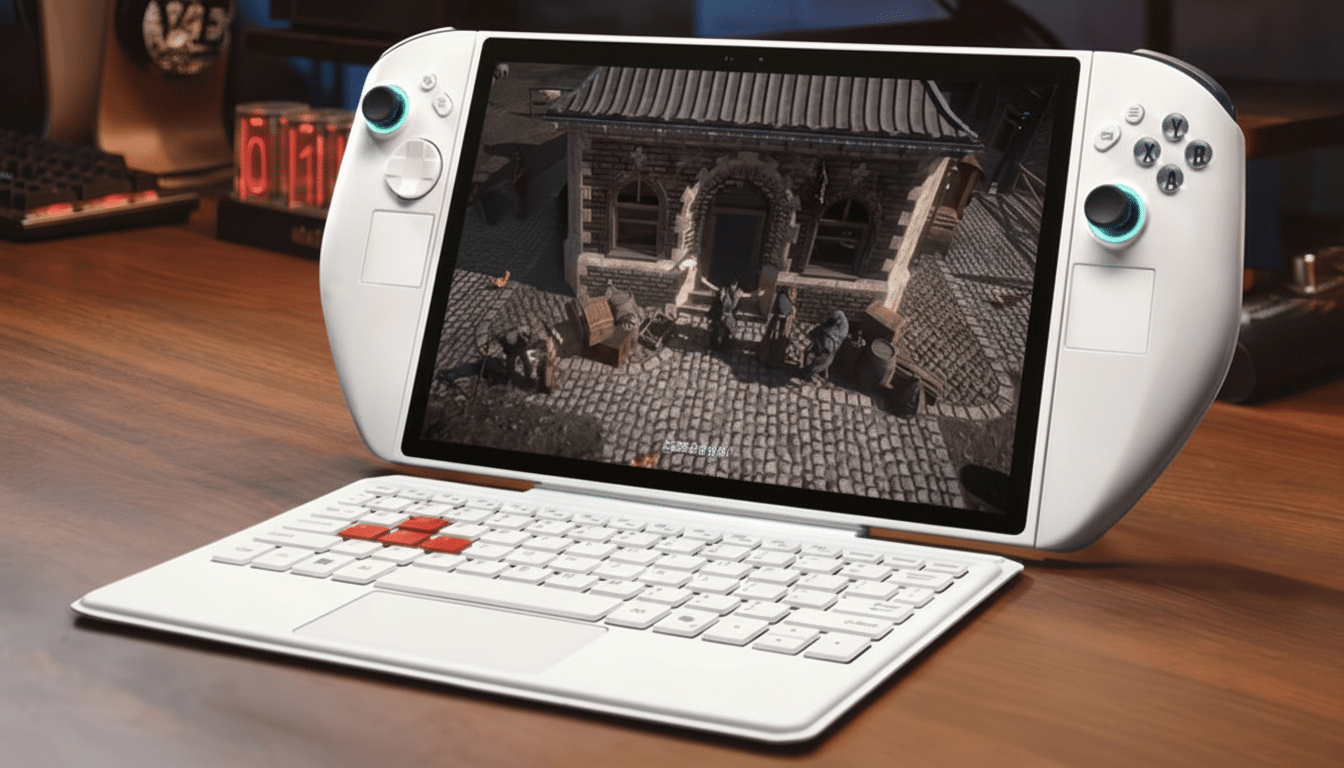Introducing the Abxylute 3D One, and ambition is its middle name.
The Abxylute 3D One is an audacious attempt to make glasses-free 3D gaming a real thing that normal people want to buy. Making its debut on Kickstarter, the Windows handheld is notable for being the first of its ilk to pack an autostereoscopic display in a portable PC—offering up native 3D for “a selected range of games” alongside real-time AI conversion otherwise. Early-bird pricing begins at $1,499, with a retail price of $1,799.

First teased at CES 2021 with the codename “Sunday Dragon,” in a partnership that included Intel and Tencent, Abxylute has refined it into a full-fledged handheld geared toward enthusiasts looking for a new way to play.
A playful glasses-free 3D screen optimized for one player
The 3D One is built around an 11-inch, 120Hz panel that harnesses eye-tracking cameras and a lenticular lens to produce depth without glasses.
That technique, called autostereoscopic 3D, has made serious progress since the time of living room-scale 3D TV. The trade-off is an old one: the system is optimized for a single viewer, which happens to be an ideal formula for portable video games.
In classic form, Abxylute has a physical switch to turn 3D on and off, an essential feature for comfort and battery saving. Weighing 1.11 kg, the device falls somewhere between a handheld and a compact desktop: there’s a robust kickstand, detachable controllers, and magnetic add-on keyboard support to go from couch play to proper Windows productivity with winning ease.
The idea is not floating in a vacuum. The demand for glasses-free depth in gaming was demonstrated by Nintendo’s 3DS, which went on to sell more than 75 million units, according to financial disclosures from Nintendo. Single-user experiences have also seen advances: on the PC side, Samsung’s recent Odyssey 3D monitor and Acer’s SpatialLabs laptops have demonstrated just how far eye-tracked 3D has come on devices for one person at a time, particularly for gaming or content creation.
Engine-level 3D and AI conversion for broader game support
The majority of glasses-free systems rely on post-processing to estimate depth from 2D inputs. For gaming, Abxylute goes a step further by working directly with developers to extract depth information from the engine for over 50 games on Steam. Such engine-level access offers busier depth, lower latency, and less performance impact compared with the usual 2D-to-3D conversion.
Supported games at launch include blockbuster titles such as Elden Ring, Baldur’s Gate 3, Death Stranding, Black Myth: Wukong, Sekiro, and Metaphor: ReFantazio. It also supports native 3D for side-by-side content in the form of many VR videos and demos, with the ability to present emulated Nintendo 3DS games exactly as they looked when played on their original hardware.

For everything else, from movies and photos to retro PC classics, the 3D One’s instant, AI-driven 2D-to-3D conversion comes into play. Though no conversion is ever perfect, the fast refresh rate and eye-tracking prevent much in the way of crosstalk and cut down on the dreaded “cardboard cutout” effect that shoddy implementations can offer.
Powerful yet laptop-portable hardware in a compact form
What makes the handheld tick is Intel’s Core Ultra 7 258V, a laptop-class processor that was selected for its frugality rather than CPU brawn. In a league where many competitors rely on AMD’s highest-wattage silicon, the bet from Abxylute is that smart 3D software and a quick panel will matter as much as peak frames.
The rest of the spec sheet is appropriately premium: 32GB of LPDDR5x memory, 1TB of storage, and a 50Wh battery. Its detachable controllers are meaty and packed with enthusiast touches, such as Hall-effect sticks to counter drift, analog triggers, and a Steam Deck–style touchpad for superior desktop navigation. They can also be magnetically snapped into one oversized controller for tabletop play.
It’s also reasonable to assume that the battery will drain more quickly during 3D-heavy sessions, especially in game-engine-level modes that require rendering even more views. The 120Hz screen will offer headroom for clarity of motion, but it’ll also draw more power when on the move; so the hardware toggle to 2D should be a useful option on those longer journeys.
Price, availability, and early outlook for the 3D One
The campaign launches with a $1,499 early-bird tier before eventually landing at retail for $1,799. That undercuts a few of those dedicated 3D desktop displays but leaves you with an all-in-one Windows rig that’s still very much in the premium range. Shipments are limited, with the first 80 capped, and more waves scheduled to follow.
And like any crowdfunded hardware, of course, potential buyers should temper their enthusiasm with the typical caveats around timelines and execution. The potential here is strong: if developer support grows and engine-level 3D proves a winner with PC titles, then the Abxylute 3D One might just be that point at which autostereoscopic gaming becomes less of a novelty and more of an edge for single-player experiences.
It’s simple enough, if ambitious—bring depth to every piece of content without chaining players to something strapped to their face. Toss in a slick display stack, a growing list of tweaked games that look great with the 3D slider cranked up, and smart construction, and Abxylute is presenting the best case yet for no-glasses 3D on a portable.

